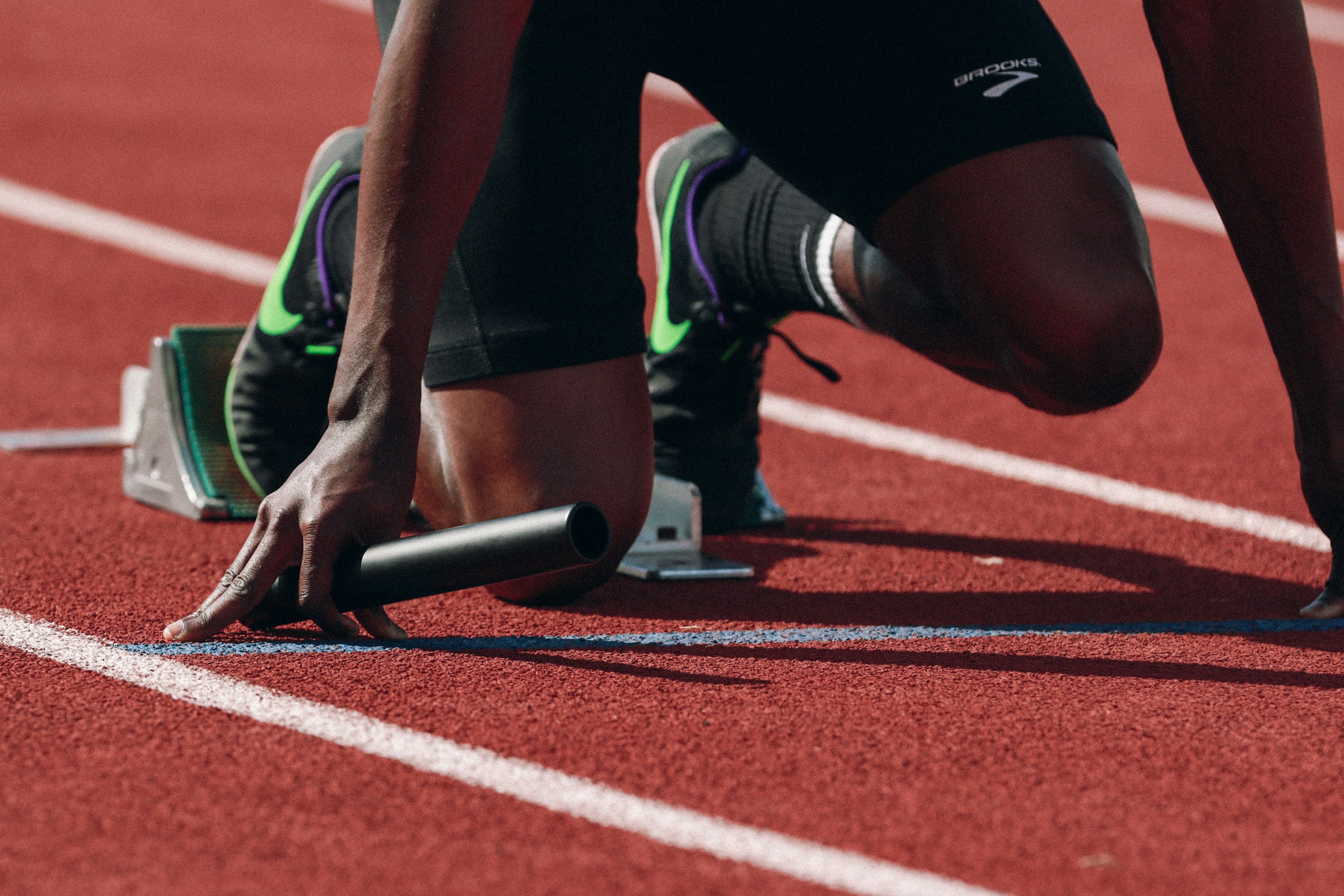What is the optimal sprinting posture for maximum velocity in track and field?

Athletes, coaches, and sports enthusiasts often ponder the question: What is the optimal sprinting posture for maximum velocity in track and field? This article aims to answer that question in-depth, providing you with substantial insights and practical tips along the way. It endeavors to help you better understand the role of posture in sprinting, enabling you to refine your technique or coaching strategies accordingly.
The Importance of Posture in Sprinting
For those unacquainted with the world of track and field, the concept of posture playing a critical role in the success of a sprinter might seem surprising. After all, isn't speed all about muscle strength and stamina? While these factors are undeniably important, they only tell part of the story. The remaining chapters are filled with elements like the optimal sprinting posture, rhythm, balance, and coordination.
A voir aussi : What are the advanced techniques for maintaining grip control in professional arm wrestling?
Proper posture is a crucial element in track and field sprinting as it aids in the efficient transmission of force from the body to the ground, resulting in superior acceleration and speed. It also enhances balance and reduces the risk of injuries, contributing to the overall performance and longevity of an athlete's career.
Essential Components of an Optimal Sprinting Posture
While it's easy to say that good posture is important for sprinting, understanding what constitutes an optimal sprinting posture is a different ball game altogether. Let's delve into the various components that contribute to the perfect posture for sprinting.
Sujet a lire : How can ultimate frisbee players develop rapid acceleration for better on-field maneuverability?
Body Alignment
The alignment of your body plays a significant role in determining your speed and efficiency while sprinting. An optimal sprinting posture requires a straight, or 'stacked', alignment from the head to the ankles. The head should be in a neutral position, looking forward, with the chin slightly tucked in. The torso should be upright, and the spine should maintain its natural curvature.
Arm Action
Contrary to common belief, the arms aren't merely tagging along for the ride during a sprint. They play an active role in maintaining balance and rhythm, and contribute to forward propulsion. To reap these benefits, the elbows should be bent at approximately a 90-degree angle, and the arms should swing forward and backward in sync with the opposite leg.
Leg Action
The legs, of course, are the primary drivers of motion during a sprint. Optimal leg action involves a high knee lift, a swift extension of the leg to strike the ground beneath the body's center of mass, and a powerful push-off using the balls of the feet.
The Role of Core Strength in Maintaining Optimal Posture
Now that we've dissected the optimal sprinting posture, it's important to understand that maintaining this posture throughout a sprint isn't as easy as it sounds. This is where core strength comes into play.
The core muscles provide stability to the torso and help maintain the proper alignment of the body during the dynamic action of sprinting. They aid in resisting the rotational forces that occur as the arms and legs swing, thereby helping to maintain balance and rhythm.
Furthermore, a strong core allows for more effective transmission of force from the legs to the ground. This means that the stronger your core, the faster and more efficiently you'll be able to sprint.
How to Achieve and Maintain the Optimal Sprinting Posture
Achieving and maintaining the optimal sprinting posture requires diligent practice, along with strength and flexibility training. Here are a few tips to help you along the way:
Practice Drills
Various drills can help improve body alignment, arm action, and leg action. These include A-skips, B-skips, high knees, butt kicks, and straight leg bounds, among others. Consistently incorporating these drills into your training regimen can significantly enhance your sprinting posture and consequently, your performance.
Strength Training
As mentioned earlier, a strong core is essential for maintaining the optimal sprinting posture. Therefore, your training program should include exercises that strengthen the core, such as planks, Russian twists, and bird dogs. Additionally, exercises that strengthen the legs, like squats, lunges, and calf raises, can help improve leg action during a sprint.
Flexibility Training
Flexibility is another key aspect that contributes to the optimal sprinting posture. It allows for a greater range of motion, which can result in a longer stride length and higher stride frequency, both of which are beneficial for sprinting speed. Regular stretching exercises, as well as techniques like foam rolling and yoga, can help improve your flexibility.
In conclusion, the optimal sprinting posture is a complex interplay of various factors, including body alignment, arm and leg action, core strength, flexibility, and diligent practice. While it might seem overwhelming at first, breaking it down into its components and working on them individually can make it a much more manageable endeavor. So, whether you're an athlete looking to improve your performance, or a coach aiming to train your athletes better, understanding and implementing the principles of the optimal sprinting posture can significantly enhance your success in the realm of track and field sprinting.
The Impact of Breathing Technique on Sprinting Posture and Performance
Breathing technique is an often overlooked but crucial aspect of optimal sprinting posture and performance. Your ability to control and regulate your breath can heavily influence both your speed and endurance on the track.
During a sprint, your body requires a large amount of oxygen to fuel your muscles. Inadequate or inefficient breathing can limit the supply of oxygen, leading to quicker muscle fatigue and a reduced sprinting speed. Conversely, efficient breathing can increase the supply of oxygen, thereby enhancing muscle performance and delaying the onset of fatigue.
The recommended breathing technique for sprinting involves taking quick, shallow breaths using the diaphragm rather than the chest. This is known as diaphragmatic breathing or belly breathing, and it allows for a higher intake of oxygen compared to chest breathing.
To master diaphragmatic breathing, you can practice the following steps:
- Lie down on your back and place one hand on your chest and the other on your stomach.
- Take a deep breath in through your nose, ensuring that your stomach rises more than your chest.
- Exhale through your mouth, letting your stomach fall.
- Repeat these steps until the movement becomes natural.
Incorporating diaphragmatic breathing into your sprinting can help maintain your optimal posture, as it keeps your upper body relaxed and reduces tension in your shoulders and neck. Furthermore, it aids in the efficient usage of energy, resulting in enhanced performance and speed.
Conclusion: The Key to Achieving Maximum Velocity
In the quest for maximum velocity in track and field sprinting, understanding and implementing the principles of the optimal sprinting posture proves crucial. A proper posture, characterized by body alignment, arm action, and leg action, not only boosts your speed and efficiency but also reduces your risk of injuries.
However, achieving and maintaining the optimal posture goes beyond understanding its components. It involves diligent practice and a commitment to strength and flexibility training. Drills that improve body alignment and arm and leg action, along with exercises that bolster core strength, are key to maintaining this posture during a sprint.
Furthermore, flexibility training enhances your range of motion, leading to a longer stride length and higher stride frequency. And let's not forget the role of an effective breathing technique in maintaining your posture and enhancing your performance.
To sum up, the optimal sprinting posture is a multifaceted concept, and mastering it requires a holistic approach that focuses on various aspects of your body and performance. But with consistent practice and the right training regimen, you can make strides towards achieving maximum velocity in track and field sprinting. And remember, every small improvement brings you one step closer to your goals. So keep sprinting, keep improving, and keep reaching for the stars!
